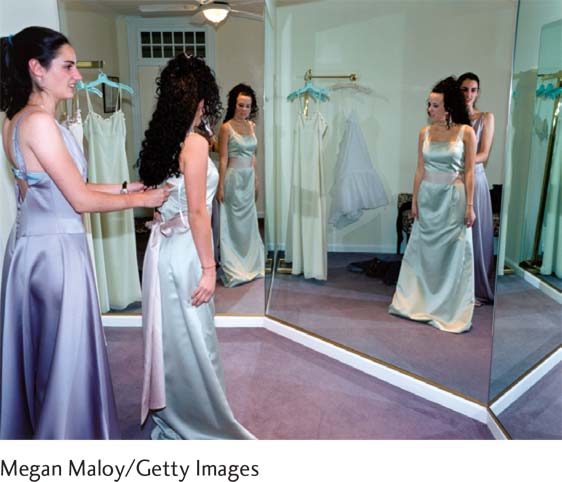11.5 Beyond Hypothesis Testing for the One-
306
Hypothesis testing with the one-
R2, the Effect Size for ANOVA
MASTERING THE FORMULA
11-

We divide the between-
The calculations for R2 for a one-

EXAMPLE 11.6
Let’s apply this to the ANOVA we just conducted. We can use the statistics in the source table shown on page 304 to calculate R2:

The conventions for R2 are the same as those shown in Table 11-12 (see page 294). This effect size of 0.79 is a very large effect: 79% of the variability in ratings of beer is explained by price.
Tukey HSD
EXAMPLE 11.7
We use the same procedure that we used for a one-

The standard error allows us to calculate HSD for each pair of means. Cheap beer (34.4) versus mid-

Cheap beer (34.4) versus high-

307
Mid-


Now we look up the critical value in the q table in Appendix B. For a comparison of three means with within-
The q table indicates two statistically significant differences for which the HSDs are beyond the critical values: −6.691 and −6.618. It appears that high-
What might explain these differences? It’s not surprising that expensive beers came out ahead of cheap and midrange beers, but Fallows was surprised that no observable average difference was found between cheap and mid-
How much faith can we have in these findings? As behavioral scientists, we critically examine the design and procedures. Did the darker color of Sam Adams (the beer that received the highest average ratings) give it away as a high-
CHECK YOUR LEARNING
| Reviewing the Concepts |
|
||||||||||||||||||||||||||
| Clarifying the Concepts | 11- |
How does the calculation of the effect size R2 differ between the one- |
|||||||||||||||||||||||||
| 11- |
How does the calculation of the Tukey HSD differ between the one- |
||||||||||||||||||||||||||
| Calculating the Statistics | 11- |
A researcher measured the reaction time of six participants at three different times and found the mean reaction time at time 1 (M1 = 155.833), time 2 (M2 = 206.833), and time 3 (M3 = 251.667). The researcher rejected the null hypothesis after performing a one-
|
|||||||||||||||||||||||||
| 11- |
Use the following source table to calculate the effect size R2 for the one-
|
||||||||||||||||||||||||||
| Applying the Concepts | 11- |
In Check Your Learning 11-
|
Solutions to these Check Your Learning questions can be found in Appendix D.